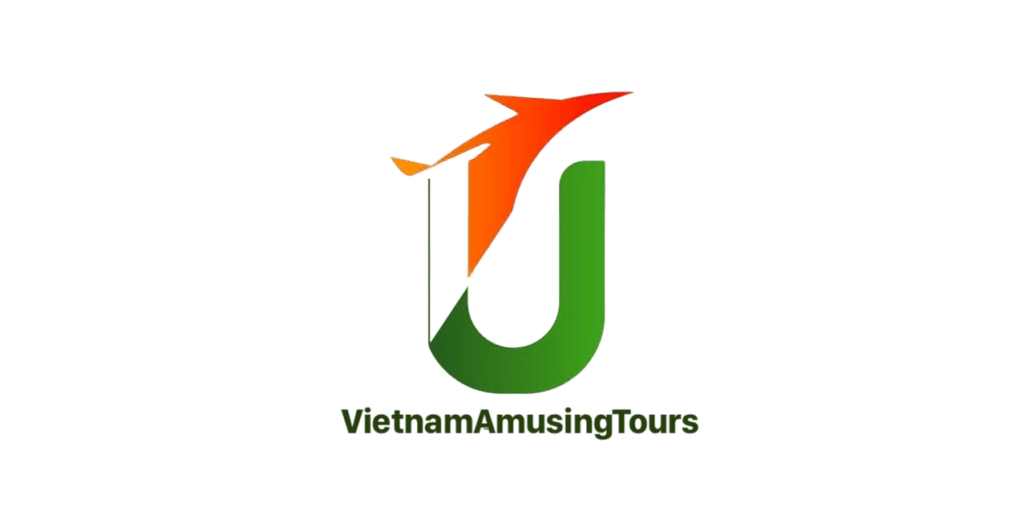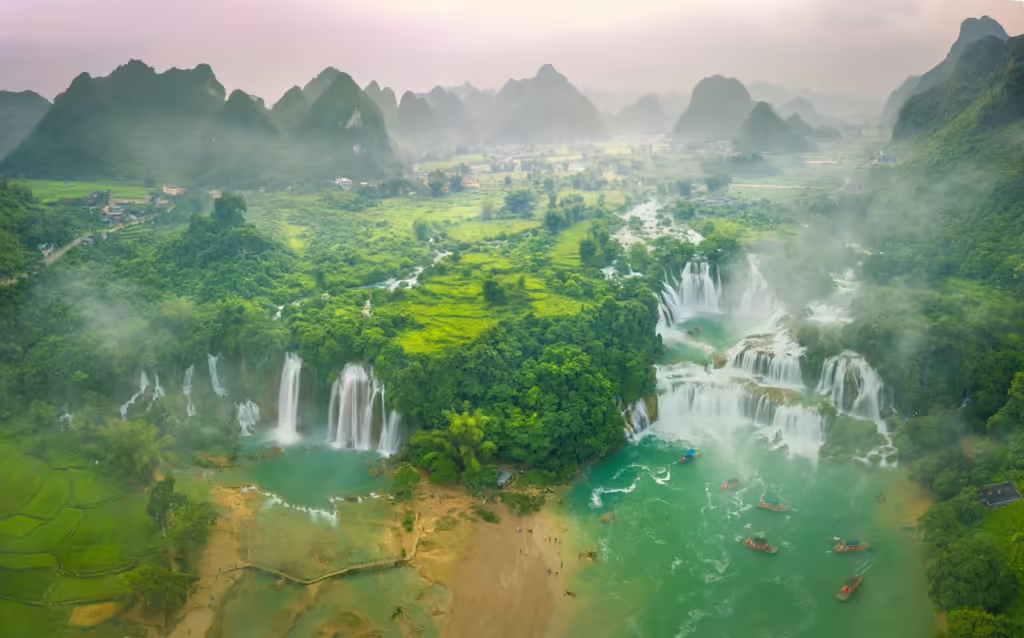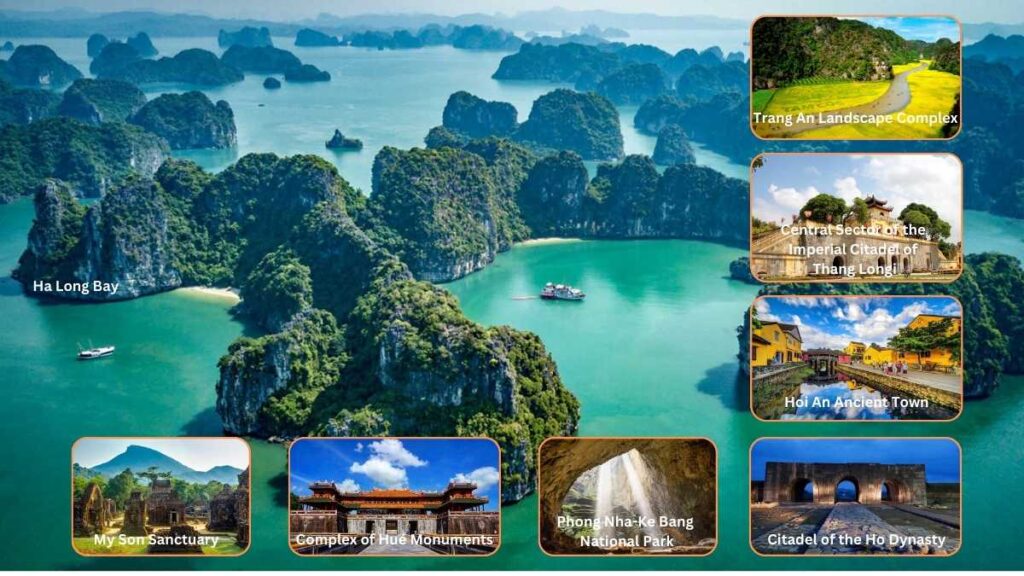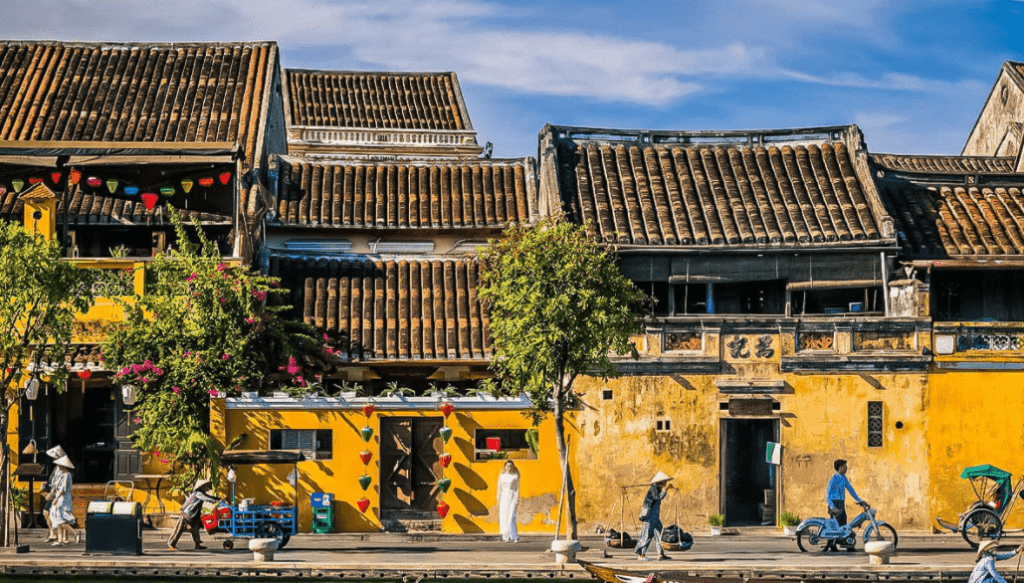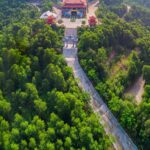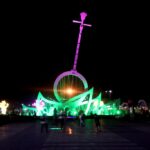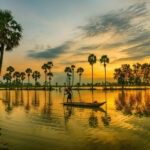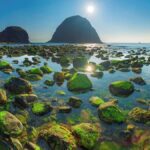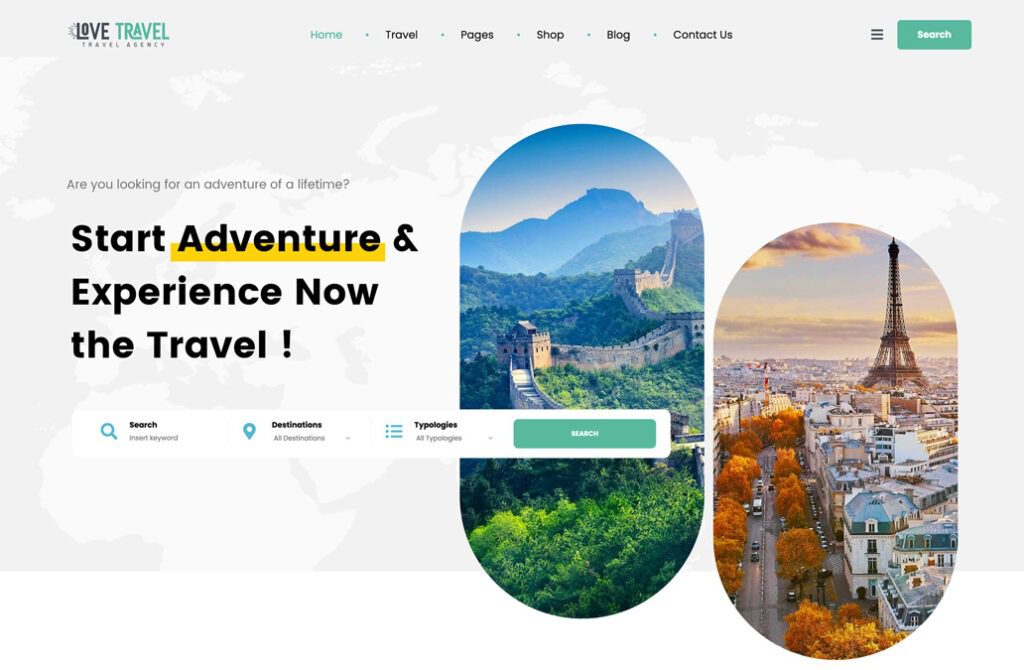Vietnam, known for its stunning landscapes and diverse culture, also experiences a rainy season that sweeps through different regions at various times. While most travelers plan their trips during the dry season, the rainy season offers its own charm, unveiling unique experiences often missed by the masses. With careful preparation, traveling during the rainy season can be a rewarding and memorable adventure. In this article, we’ll explore the beauty of rainy season travel in Vietnam, along with practical tips for staying safe and making the most of your journey.
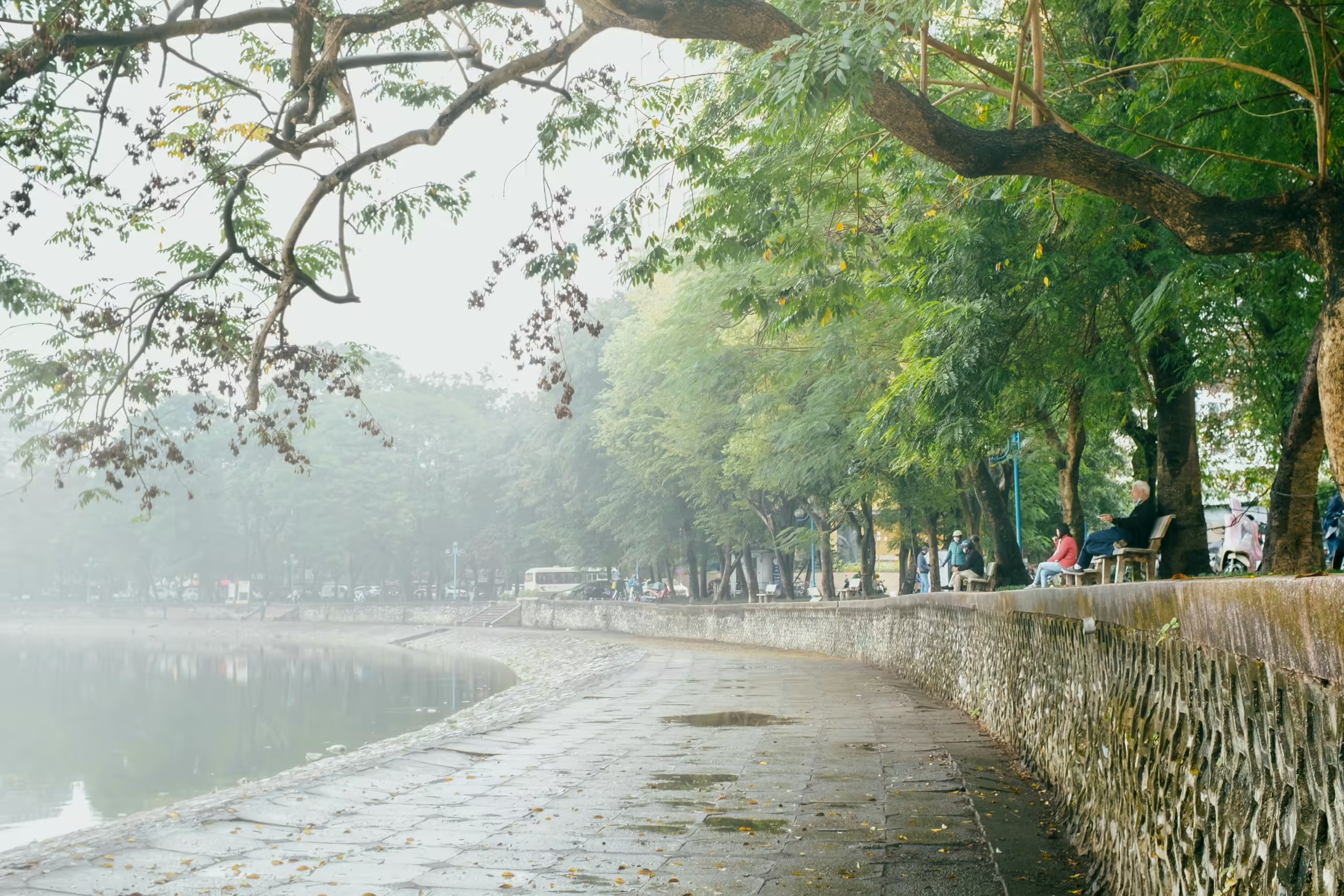
Ha Noi in Vietnam’s rainy season
Rainy Season Travel in Vietnam: Unique Experiences and Essential Preparations
ToggleUnique Experiences During Vietnam’s Rainy Season
1. Full Rivers, Waterfalls, and Lush Green Landscapes
The rainy season in Vietnam, which typically falls between May and September, brings abundant water, turning rivers, lakes, and waterfalls into majestic spectacles. For instance, Bản Giốc Waterfall—one of the most impressive in Vietnam—reaches its peak beauty during this time. Located on the border between Vietnam and China, the cascading water, surrounded by lush greenery, creates a stunning backdrop.
Similarly, the Mekong Delta becomes more vibrant, with its waterways full of life. The boat rides through the mangroves are more exciting, with the water levels high, making it easier to navigate through remote areas. The floating markets come alive during the rainy season, with fewer tourists, offering an authentic glimpse of local life.
If you’re a nature lover, Vietnam’s rainy season also makes the rice terraces more vibrant. Sapa, Hoàng Su Phì, and Mù Cang Chải offer some of the most scenic views as rice paddies turn a golden hue in the rain, creating postcard-perfect images.
2. Fresher, Cleaner Air and Cooler Temperatures
Rain naturally cleanses the air, and during the rainy season, Vietnam’s cities and countryside feel fresher and cooler. After a heavy rain, places like Hanoi, Hue, or Da Nang become more enjoyable to explore, with the air crisp and pleasant. For those who dislike the hot, humid days of summer, the rainy season offers a reprieve, making it easier to explore both urban and rural destinations without sweating in the heat.
3. Romantic Atmosphere
Traveling in Vietnam during the rainy season brings unexpected romantic experiences. Whether you’re strolling through the ancient streets of Hội An under a light drizzle or sipping Vietnamese coffee at a local café as the rain taps on the roof, these quiet moments often leave lasting memories.
The reflections of lanterns on the rain-soaked streets of Hội An or the shimmering lake in Hồ Gươm (Hoàn Kiếm Lake) in Hanoi can be particularly picturesque. Enjoying a quiet boat ride in Ninh Bình’s rivers while the mist lingers on the water or hiking to a foggy mountain top can create ethereal experiences, as if you’ve stepped into another world.
4. Lower Costs and Fewer Crowds
For budget-conscious travelers, Vietnam’s rainy season is the best time to visit. Because it’s considered the off-season, accommodation prices are lower, and you’ll often find discounts on flights, tours, and activities. Hotels and homestays are less crowded, allowing for a more peaceful experience.
Popular tourist spots like Hạ Long Bay, Hue, and Da Nang see fewer tourists during this period. This means you can enjoy these stunning locations with more privacy and fewer lines. Temples, museums, and other cultural attractions are also quieter, offering a more immersive experience.
5. Richer Local Experiences
As the rainy season is less busy for tourism, locals often have more time to engage with visitors. Whether you’re taking a cooking class in Hoi An, exploring a traditional market in Can Tho, or joining a local Buddhist ceremony in Hue, you’re more likely to experience authentic Vietnamese life.
Additionally, rainy days are perfect for indoor cultural activities such as visiting museums, art galleries, and coffee shops, where you can learn about Vietnam’s history and culture while staying dry.
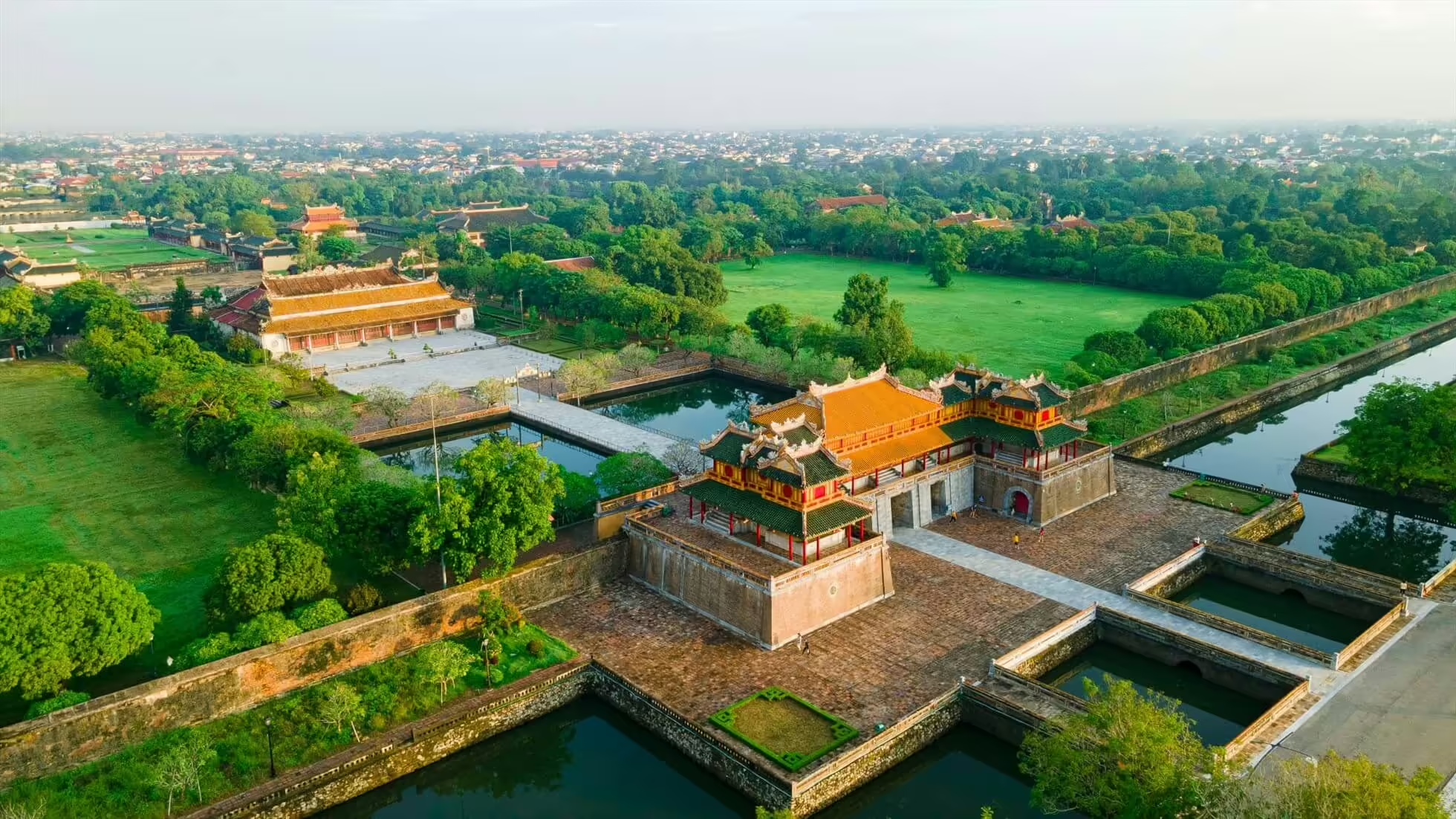
Hue’s rainy season
Practical Tips for Rainy Season Travel in Vietnam
While the rainy season can offer unique experiences, it’s essential to prepare for unpredictable weather. Here’s how to ensure a safe and enjoyable trip:
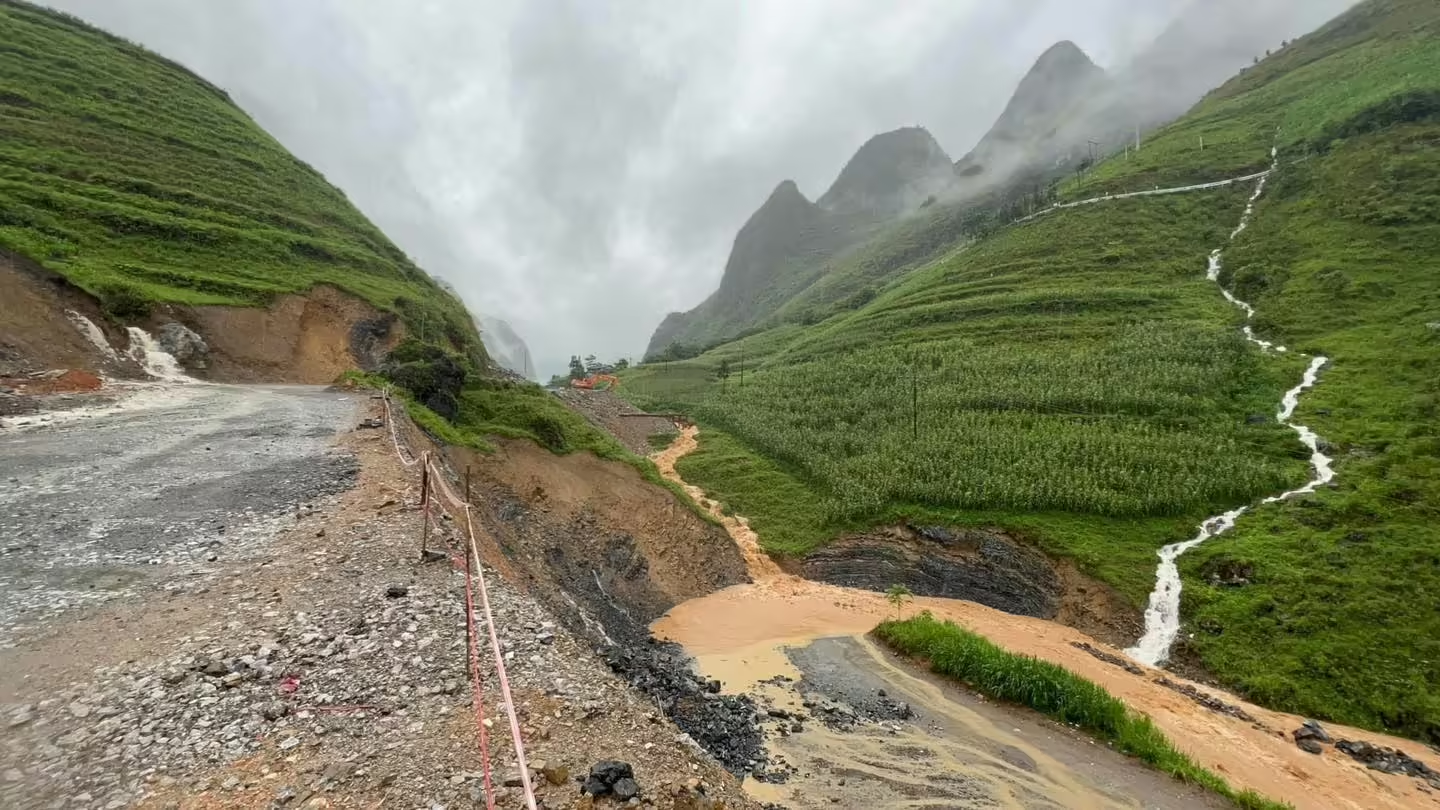
Landslides Ha Giang in Vietnam’s rainy season
1. Research Your Destination
Certain regions in Vietnam are more affected by the rainy season than others. For instance, Hạ Long Bay is prone to tropical storms, and Sapa can experience landslides due to heavy rain. Be sure to check the weather forecast before traveling to these areas, and have backup plans in case activities get canceled.
If you’re set on visiting during the rainy season, consider staying in larger cities like Hanoi, Hue, or Da Nang, where infrastructure is better equipped to handle sudden weather changes.
2. Pack Smart for the Rain
Make sure to pack rain-appropriate clothing such as lightweight raincoats, waterproof shoes, and quick-dry clothing. Don’t forget to bring extra socks, as wet feet can quickly ruin your day.
Other essentials include a travel umbrella, plastic bags for wet clothes, and a waterproof phone case. You’ll also want to have a backup power bank and snacks in case you’re stuck indoors or unable to access restaurants during heavy downpours.
3. Stay Safe During the Rainy Season
- Avoid risk-prone areas: During the rainy season, avoid visiting areas that are prone to landslides or flooding, such as remote mountainous regions.
- Check weather alerts regularly: Use apps or websites such as the Vietnam Meteorological Service to stay updated on weather conditions.
- Know the local emergency numbers:
- 114 for fire and rescue.
- 112 for emergency and natural disaster response.
- Follow local regulations: If the local government issues evacuation orders or travel restrictions, be sure to follow them. In areas like Hạ Long Bay, authorities may halt boat tours for safety reasons during storms, and it’s important to heed these warnings.
Areas in Vietnam Affected by the Rainy Season:
- Hạ Long Bay: Heavy storms can disrupt boat trips and cruises. Always check for weather advisories before embarking on any trips.
- Central Vietnam (Hue, Da Nang, Hoi An): This region is known for its long rainy season and occasional typhoons. Expect road closures or delayed flights.
- Northern Highlands (Sapa, Ha Giang): Landslides are a risk in mountainous regions during heavy rainfall, and hiking trails may become too dangerous to navigate.
Final Thoughts: Embrace the Rainy Season in Vietnam
While the rainy season in Vietnam comes with its challenges, it can be an incredibly rewarding time to visit. With the lush landscapes, vibrant rivers, cooler temperatures, and affordable travel options, it’s a time to discover the hidden beauty of this amazing country. As long as you plan carefully, pack wisely, and stay updated on weather conditions, the rainy season will provide you with unforgettable experiences.
Discover Vietnam with VietnamAmusingTours
Our expert guides lead you through immersive cultural activities, adventure-filled nature tours, and serene wellness retreats, ensuring a unique and personalized travel experience. At VietnamAmusingTours, we pride ourselves on creating bespoke tours tailored to your preferences, providing unparalleled service and attention to detail. Discover the beauty, history, and warmth of Vietnam with us, and make your journey truly memorable. Book your adventure today with VietnamAmusingTours on Here or Exploring list tours of Us! and on Tripadvisor
Contact VietnamAmusingTours for expert travel advice and personalized itineraries to ensure a safe and enriching adventure across Vietnam’s diverse landscapes. Plan your trip now!
